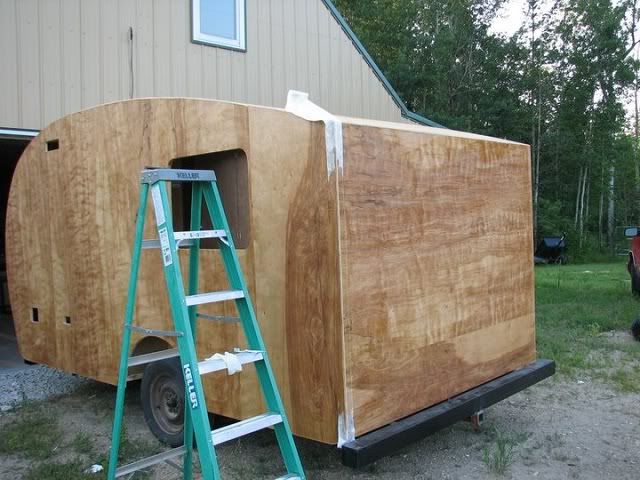Is fiberglassing rocket science?
I'd like to ask those of you who have glassed the seams on your TTT's, or the entire TTT, whether the task is as imposing as I think it is?
I'm very handy with wood and tools, but in my 50 years have never had the opportunity to work with glass. I guess I'm trying to convince myself that it isn't that bad so as not to eliminate epoxy and glass as an option for finishing my current build. As of now, I'm considering that Plas-T-Cote with the Plas-T-Cote joint tape for a final finish. From all I've read about it, it's custom made for a TTT finish, but I'm not certain that I haven't just settled on it because of my fear, (dread, actually), of trying fiberglass for the first time on such an involved and expensive project.
Any information, (or moral support), would be greatly appreciated. Normally, I live by the credo that "I ain't skeered!" This time, however, I have to don the yellow striped shirt and admit that I may just be a little skeered.
As always, thanks for all your help.
Brian
I'm very handy with wood and tools, but in my 50 years have never had the opportunity to work with glass. I guess I'm trying to convince myself that it isn't that bad so as not to eliminate epoxy and glass as an option for finishing my current build. As of now, I'm considering that Plas-T-Cote with the Plas-T-Cote joint tape for a final finish. From all I've read about it, it's custom made for a TTT finish, but I'm not certain that I haven't just settled on it because of my fear, (dread, actually), of trying fiberglass for the first time on such an involved and expensive project.
Any information, (or moral support), would be greatly appreciated. Normally, I live by the credo that "I ain't skeered!" This time, however, I have to don the yellow striped shirt and admit that I may just be a little skeered.
As always, thanks for all your help.
Brian



 That really came out beautifully. Just the kind of incentive I needed.
That really came out beautifully. Just the kind of incentive I needed.